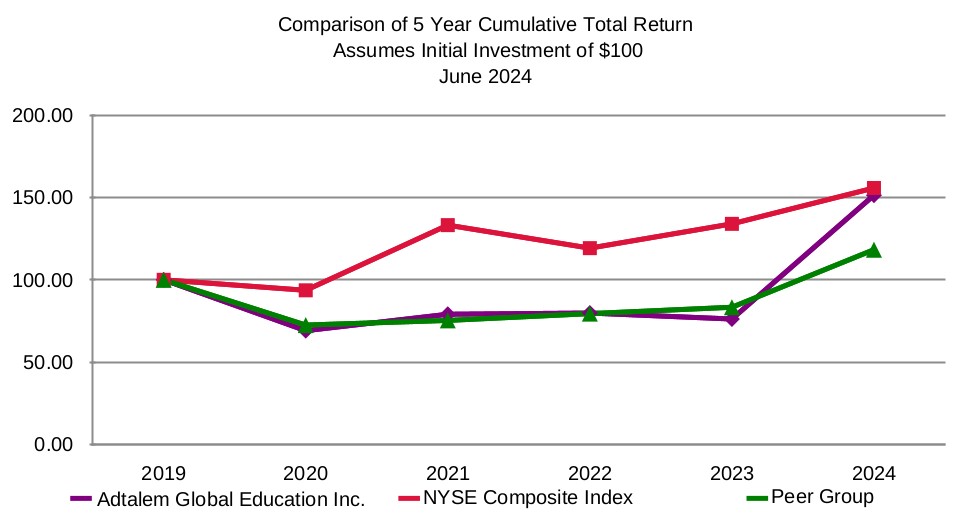Item 1A. Risk Factors
Adtalem’s business operations are subject to numerous risks and uncertainties, some of which are not entirely within our control. Investors should carefully consider the risk factors described below and all other information contained in this Annual Report on Form 10-K before making an investment decision with respect to Adtalem’s common stock. If any of the following risks are realized, Adtalem’s business, results of operations, financial condition, and cash flows could be materially and adversely affected, and as a result, the price of Adtalem’s common stock could be materially and adversely affected. Management cannot predict all the possible risks and uncertainties that may arise. Risks and uncertainties that may affect Adtalem’s business include the following:
Risks Related to Adtalem’s Regulated Industry
We are subject to regulatory audits, investigations, lawsuits, or other proceedings relating to compliance by the institutions in the Adtalem portfolio with numerous laws and regulations in the U.S. and foreign jurisdictions applicable to the postsecondary education industry.
Due to the regulated nature of proprietary postsecondary institutions, we are subject to audits, compliance reviews, inquiries, complaints, investigations, claims of non-compliance, and lawsuits by federal and state governmental agencies, regulatory agencies, accrediting agencies, present and former students and employees, shareholders, and other third parties, any of whom may allege violations of any of the legal and regulatory requirements applicable to us. If the results of any such claims or actions are unfavorable to us or one or more of our institutions, we may be required to pay monetary judgments, fines, or penalties, be required to repay funds received under Title IV programs or state financial aid programs, have restrictions placed on or terminate our schools’ or programs’ eligibility to participate in Title IV programs or state financial aid programs, have limitations placed on or terminate our schools’ operations or ability to grant degrees and certificates, have our schools’ accreditations restricted or revoked, or be subject to civil or criminal penalties. ED regulations regarding financial responsibility provide that, if any one of our Title IV institutions is unable to pay its obligations under its Program Participation Agreement (“PPA”) as a result of operational issues and/or an enforcement action, our other Title IV institutions, regardless of their compliance with applicable laws and regulations, would not be able to maintain their Title IV eligibility without assisting in the repayment of the non-compliant institution’s Title IV obligations. As a result, even though Adtalem’s Title IV institutions are operated through independent entities, an enforcement action against one of our institutions could also have a material adverse effect on the businesses, financial condition, results of operations, and cash flows of Adtalem’s other Title IV institutions.
The ongoing regulatory effort aimed at proprietary postsecondary institutions of higher education could be a catalyst for additional legislative or regulatory restrictions, investigations, enforcement actions, and claims.
The proprietary postsecondary education sector has at times experienced scrutiny from federal legislators, agencies, and state legislators and attorneys general. An adverse disposition of these existing inquiries, administrative actions, or claims, or the initiation of other inquiries, administrative actions, or claims, could, directly or indirectly, have a material adverse effect on our business, financial condition, result of operations, and cash flows and result in significant restrictions on us and our ability to operate.
Adverse publicity arising from investigations, claims, or actions brought against us or other proprietary higher education institutions may negatively affect our reputation, business, or stock price, or attract additional investigations, lawsuits, or regulatory action.
Adverse publicity regarding any past, pending, or future investigations, claims, settlements, and/or actions against us or other proprietary postsecondary education institutions could negatively affect our reputation, student enrollment levels, revenue, profit, and/or the market price of our common stock. Unresolved investigations, claims, and actions, or adverse resolutions or settlements thereof, could also result in additional inquiries, administrative actions or lawsuits, increased scrutiny, the withholding of authorizations, and/or the imposition of other sanctions by state education and professional licensing authorities, taxing authorities, our accreditors and other regulatory agencies governing us, which, individually or in the aggregate, could have a material adverse effect on our business, financial condition, results of operations, and cash flows and result in the imposition of significant restrictions on us and our ability to operate.
